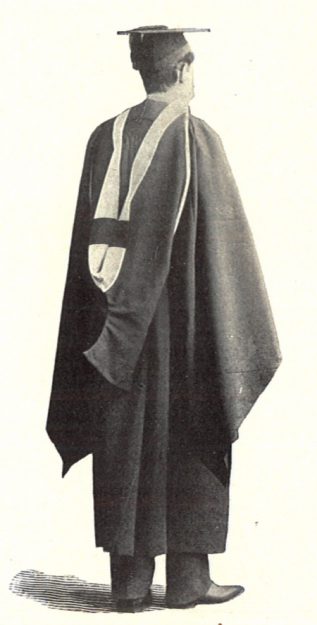DePauw University
Iowa
1837




Blue was the school color for DePauw University during the latter half of the 19th century but old gold was first used at an 1890 football game and quickly became the university’s only color. Black was added as a second color in the 1910s. But for many years after that, blue continued to be used for the ribbon on the university’s diplomas.
Citations in the World Almanac (listed by cover date; color information is from the previous year): old gold (1895); yellow (1896); old gold (1897-1913); old gold/black (1914); old gold (1915); old gold/black (1916); black/gold (1917-1918); old gold/black (1923-1931); old gold (1934-1935)


Although it may have been assigned earlier, the academic hood lining design for DePauw University was first cited in a 1918 Encyclopedia Americana article on academic costume written by Gardner Cotrell Leonard, the Director of the Intercollegiate Bureau of Academic Costume (IBAC). Leonard stated that the university had been assigned a hood lining that was old gold, a description that did not change in subsequent lists from the IBAC.
However, in Intercollegiate Bureau lists there were no less than three institutions to which the Bureau had assigned identical old gold hood linings: the University of Iowa, Beloit College, and DePauw University. The schools were probably assigned their old gold hood lining in that order.
To resolve this problem, a black heraldic bar has been added to DePauw’s old gold lining, a solution to duplication problems of this sort the Bureau began to use no later than 1902, but not in this instance.